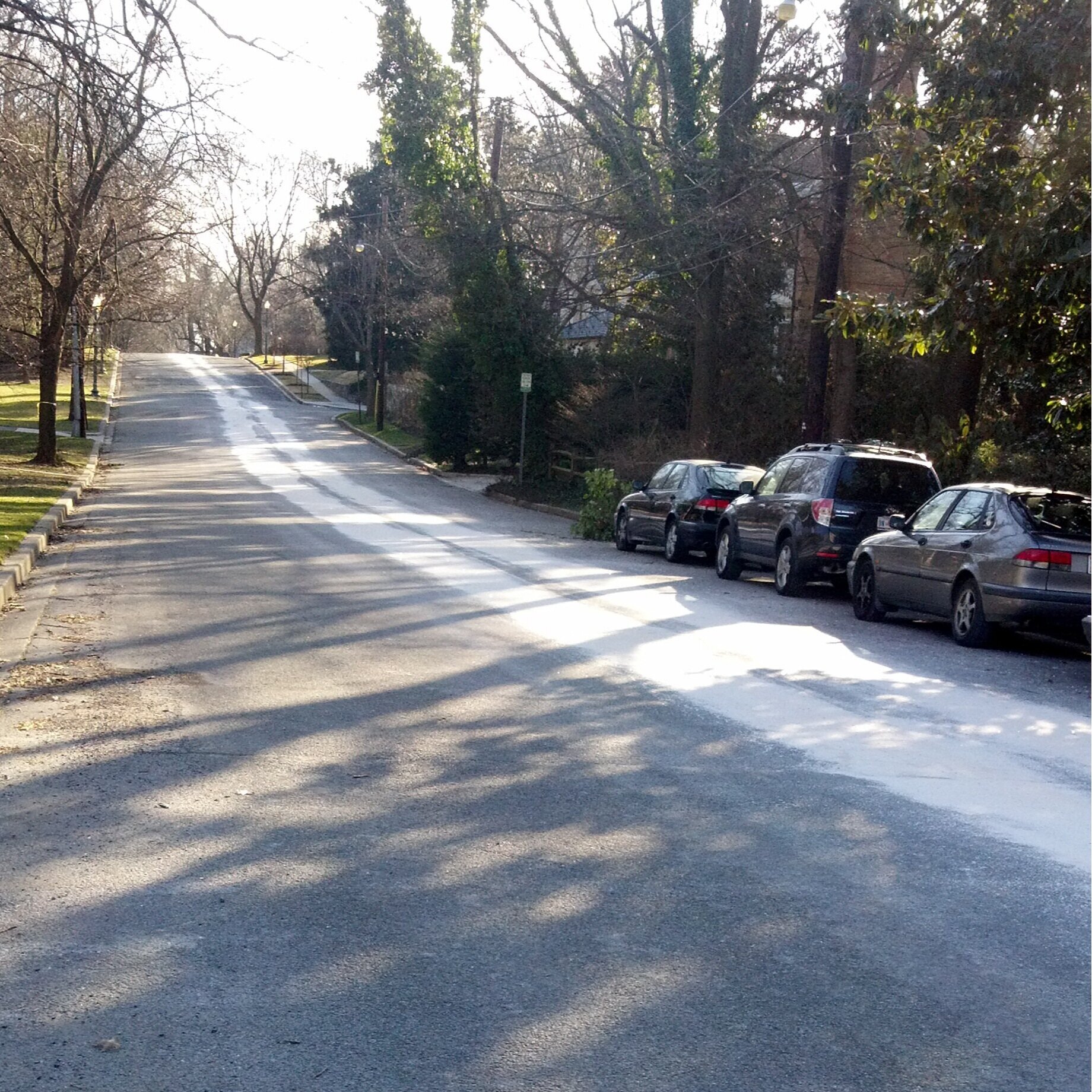Not snow, but too much road salt.
Run-off from spills like this go directly to the creek and then to the Potomac River. A recent study shows that US rivers, including the Potomac, are becoming increasingly salter affecting the drinking water supply.
Urban streams like Little Falls Branch have it tough in the winter. As usual, the culprit is us. Because it's safer to have clear streets free of ice and snow, the people that plow the snow also put down salt – in huge quantities. As soon as things melt, much of that salt ends up in in the creek.
To document the impact of road salt run-off, LFWA volunteers are taking water samples to see how high salt levels are in the creek and how they are affected by snow storms. Stream team leader Frank Sanford is heading it up, working with the Izaak Walton League’s Winter Saltwatch. We are sampling at three locations: (1) in Somerset, just downstream of the bridge near the swimming pool, (2) in the Green Acres neighborhood, where the creek runs through a concrete channel and (3) below Massachusetts Avenue.
In general, levels during the summer and fall were safe enough for living things in the creek at both locations. However, after the snowfall on January 12 and 13 there was a dramatic increase. At the Somerset location, the concentration shot up from below 29 ppm in December to 299 ppm on January 15 and 548 ppm on the 18th. At the Massachusetts Ave. location, the concentration was literally off the chart – probably 800 ppm or more. That level is considered toxic for animal life; chronic exposures are unhealthy at as low as 230 ppm.
LFWA is working to make the municipalities who arrange for snow removal more aware of the problem, but with little effect so far. We hope that with continued sampling to demonstrate the very real impact of road salting, we may be able to make more progress.
Home owners can help reduce the impact of salt:
By limiting how much salt they use on their sidewalks and driveways. More is not better when it comes to salting.
By switching to magnesium chloride road salt. It continues to melt snow and ice until the temperature reaches -13 F. The salt releases 40% less chloride into the environment that either rock salt or calcium chloride.
By using a salt alternative – like kitty litter, sand or even a towel to cover slippery spots.
By reporting salt spills to 311. The County or DC Government will send someone out to clean them up. If they don’t, let your elected officials know.
Figure from From Izaak Walton League, Winter Salt Watch


